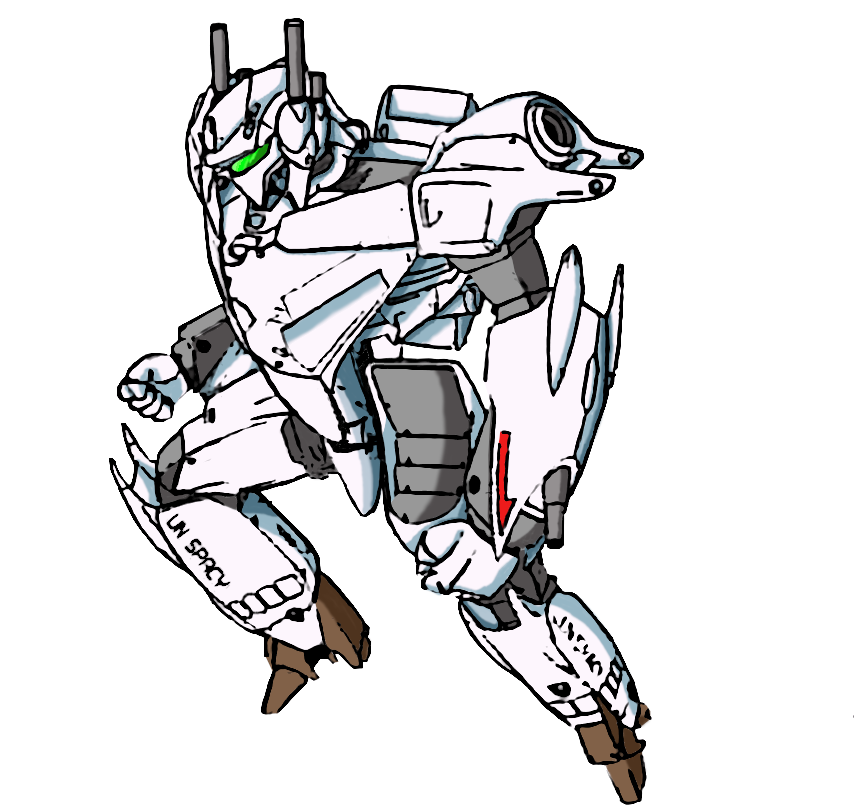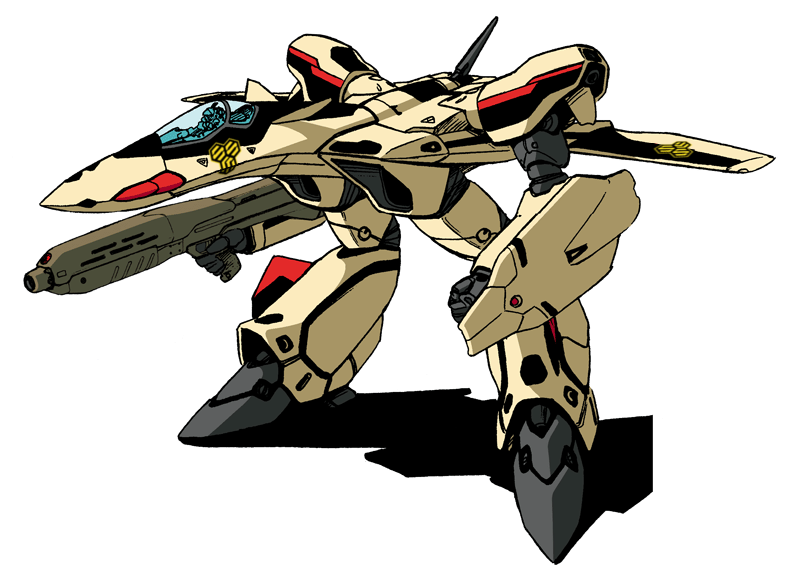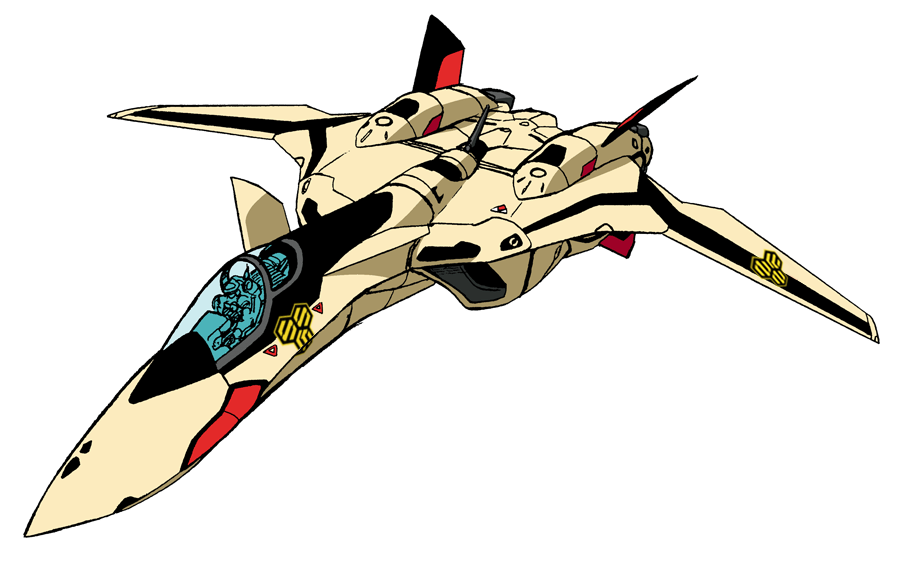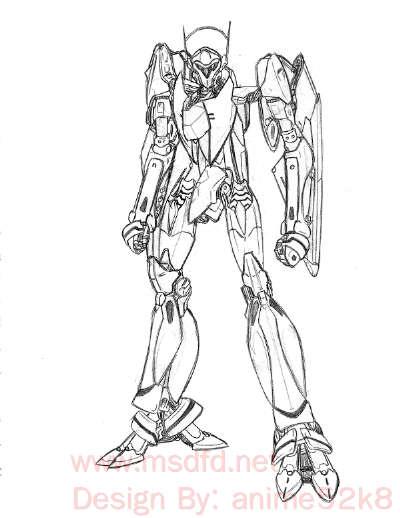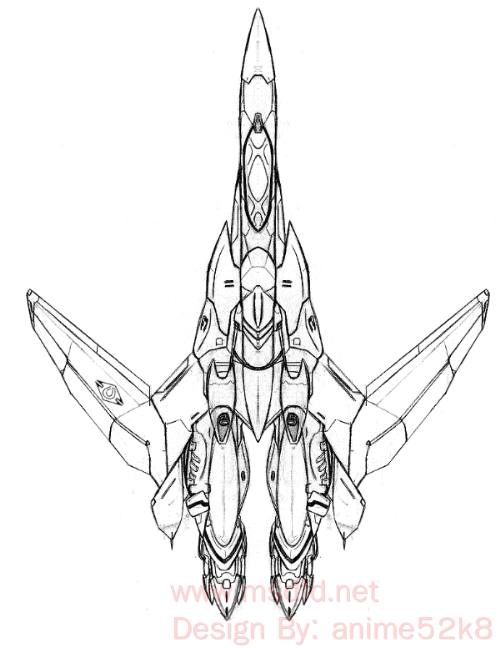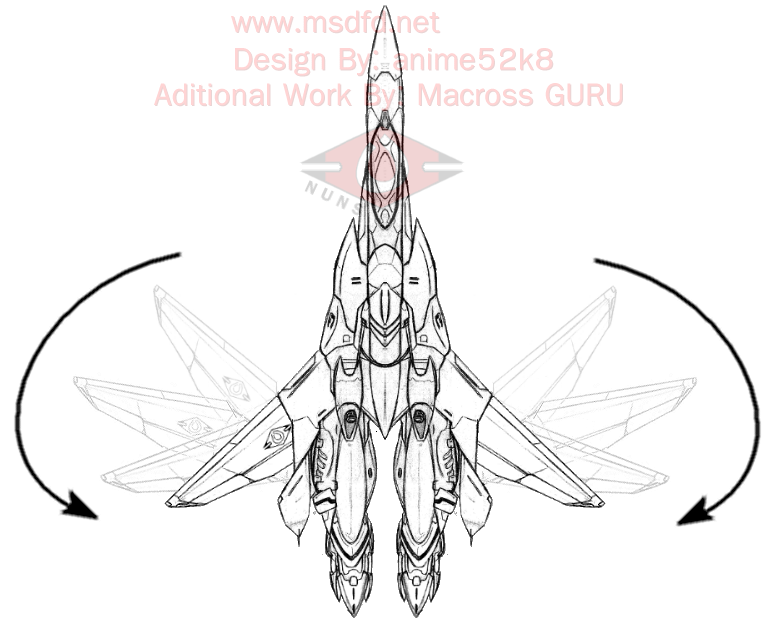-
Posts
76 -
Joined
-
Last visited
Content Type
Profiles
Forums
Events
Gallery
Everything posted by Macross GURU
-
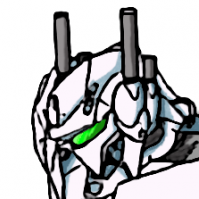
rpg Macross/Robotech RPG by Strange Machine Games
Macross GURU replied to Macross GURU's topic in Games
You see that's the point. A lot of these guys either aren't able to obtain the publications or come here to flesh out the fluff for the game. The whole reason I recovered my old MW handle was so I could learn the new fluff and back story, and any other holes in my knowledge to make my home brew system. I wouldn't have known all that and would have made the same mistakes that the game publishers do. With that knowledge I can now flesh out better fluff for the destroids and variable fighters. I'll open a new thread once my system is ready. I'll post the PDF files on that thread. FEMAS as a system will be separate. I'll have a Macross version separate from the FEMAS version. -

rpg Macross/Robotech RPG by Strange Machine Games
Macross GURU replied to Macross GURU's topic in Games
I said similar. Chobium armor is a lightweight highly resistant composite, for which the manufactur is an official secret of the United Kingdom. OTM is the name but unofficially, according Kawamori, is space metal. Hyper carbon which I've seen referenced several time in Macross publications, is in real life Carbon 60. So much retcon. I really stopped caring. To me it is space metal, that is what Kawamori said in the beginning, that is what it is. -

rpg Macross/Robotech RPG by Strange Machine Games
Macross GURU replied to Macross GURU's topic in Games
Naturally the VF-1 would seem less armored then the Tomahawk. Us in the know understand the VF-1 uses energy convertion armor with hyper carbon. And the Tomahawk uses a composite armor similar to real life chobium armor. The thing is that both are equally strong, but it is obvious that the designers are casual fans of the series and don't dive into the details. This is where good GMs know the subject material and make modifications where necessary. I went back to working on FEMAS and tinkering with the combat system. Debating whether I should use target number or threshold numbers for the armor values. -

rpg Macross/Robotech RPG by Strange Machine Games
Macross GURU replied to Macross GURU's topic in Games
It didn't look as though they did. I saw a ton of obvious mistakes even to Robotech. They didn't even use real life terms like FLIR (Forward Looking Infra Red) which is a system they actually use in real life and in Macross. I thought it was overly simple. My gripe was that any skill could be used for almost anything. There wasn't a set of specialized skills for combat or social or technical. Saying that the system was a little to similar to FEMAS (Fast Engagement Mecha And Sci-Fi), a system I've been working on as a general open source system that uses some similar mechanics to Shadowrun 3rd edition but has some similar concepts from Shadowrun 4/5 and d20. I liked the play though in SMG but I feel that FEMAS would do it a lot better. It was eerie that they had a stress tracking system similar to mine but not quite identical. I haven't even competed FEMAS yet so there is no way they had copied it, and now that SMG released theirs, I am reserved to release my open source version. Not true. My wife loves Macross and mecha anime, but she doesn't like overly complicated systems. She likes better character development and stat derivatives, which I felt SMG was lacking. Mecha combat could have been better. There again kinda similar to my system where armor values are used as part of target numbers, except I have a speed/velocity system and the action system is based on the pilot or combat skill. Another thing there isn't anything to quantify what a character could do without a skill. Someone who doesn't have say 'acrobatics' as a skill should at least be able to do a test against a target number to climb over a fence, even if they're not good at it, this would be in the base stats. Another thing I felt was missing was a perk and flaw system which could have fleshed out the character development aspect. Well that says a lot for their future with the branding and confirms that HG is merely a properties company that only wants to monopolize on a property and have power over it. -

lineart VF-X-4 Battroid from Macross: Remember Me
Macross GURU replied to Macross GURU's topic in Fan Works
Ahhh! I hadn't played Macross: 2023 or Macross: Eternal Love Song yet. I remember the VF-X-4 being in the PC98 game. -
Hello, I've been trying to hunt down some rare art. I found this little gem and made an attempt to clean it up and enhance it. It is the VF-X-4 Siren from the Macoss: Remember Me game on th PC98, correction Macross: Eternal Love Song promotional art. Thanks to @Seto Kaiba for the correction. Original drawing unknown author; possibly by Koichi Ohata. Enhancement and Color done by Me.
-

rpg Macross/Robotech RPG by Strange Machine Games
Macross GURU replied to Macross GURU's topic in Games
Added a basic/quick review of the system to the OP. -

rpg Macross/Robotech RPG by Strange Machine Games
Macross GURU replied to Macross GURU's topic in Games
Hi @sketchley, I'm using my own conversation using @Mr March's database as reference. Any another Macross reference I can find. All I need is the size, mass, thrust, velocity and any other relevant details. I have a pretty good handle on the mecha since I've been doing this for over 20 years. Your resources will still be helpful. The way the system works, there isn't a conversation that can be made, directly anyway. It is more of a narrative, descriptive rpg. The combat is dice pool based kind of like shadowrun. The stress system tracking drama and fatigue is pretty good. Here is a basic break down of combat. I have a dice pool of 4; I roll 4 six sides and get a result of 4, 4, 5, 6. Two 4s are equal to one success, one 5 is equal to one success and one 6 is equal to two successes. That gives me a total of 4 successes. My target has 2 armor and 2 structure. The 2 armor negates 2 of my successes and leaves 2 successes to take out the structure. My target doesn't want to die, so instead he sacrifices an arm, and a leg to absorb the damage. He can still fight not, just as well, but he can. The GM gives the target a -1 penalty to his dice pool because he can't maneuver very well. Now if the target had decided to defend for his second action instead of attacking two other members in your party, the armor rating would be higher by a success or two from all the maneuvering. This is a very basic description of the combat, but as you can see damage is handled more abstractly, rather than literally quantified. -

rpg Macross/Robotech RPG by Strange Machine Games
Macross GURU replied to Macross GURU's topic in Games
This game is more about narrative style of play which I feel encompasses the story aspect of Macross rather then trying to quantify cold hard stats. Yes Palladium is only what we've known for many years, so many are biased by it. After many years of playing Macross games Palladium was terrible for this style of story telling. I've played though the final product and it feels far more cinematic. I really like how my game played out like a Macross series and the interactions between characters seemed richer. Combat is fairly basic but I like the more abstract systems and components damage rather then 1000 hit points and all the stat bloat. It felt quick and more cinematic. I have to say this style isn't for everyone. Much like Paranoia, this game requires a GM that really knows what they are doing. The nice thing I like about this book is that they credit Shoji Kawamori, Haruhiko Mikimoto, and others involved in the making of Macross. Unfortunately, HG got the rights renewed. HG is a company that won't go away. Most of their money comes from property holdings, real estate, and other properties. Macross is just a thing they claim rights to. Yes, they are jerks. They are a company with poor ethical compass. Sadly, they aren't going anywhere anytime soon. So with that in mind I'd rather support s company that is currently holding the IP for RPGs and is doing it well rather then supporta a company that screws over their kick starter subscribers and has the same personal and ethical issues as its licensee. Palladium is a mess. -
Apparently after the Robotech RPG Tactics debacle and subsequent loss of the Robotech/Macross IP from HG, Strange Machine Games now has the SDF-M/RT IP and has released a new RPG using their Advantage 6 (AD6) system. I have a copy and so far I like it. It isn't hard to make adjustments to run SDF Macross games, just change some terminology. An ebook copy can bought at RPG DriveThru. I'm strongly thinking of making some fan supplements for the RPG so GMs and Players can run games within other eras of the Macross canon (yes even the alternate universe of Macross II). Of course none of the RPGs mechanics or components can be published in the fan supplement except for stats and components not in the core book. Robotech RPG by SMG So what do you guys think? ----------------------------------------------------------------------------------------------------------------------------------------------------------------- [Edit] General Review: I've analyzed the game after a run and mostly theory play, the game works mostly on the narrative style rather then simulation. Although there are various optional rule that allow for more simulation style play and high legality modes. The general mechanics are: Narrative > Conflict > Resolve > Narrative. Most RPGs operate or are supposed to operate in this fashion. Robotech by Palladium attempts to use a more direct direct approach to Simulation leaving the Narrative to abstract conflicts with some conflict resolution conducted with the use of skills. Much like how D&D works, the characters have stats that represent the physical and mental capabilities of the character. Skills and combat are derived off of those stats. This a stat derivative simulation where the data drives the character. When is comes to combat everything has a large number of damage points to represent the material health of an object. Although in Palladium there are some system consistency issues, largely it is ruled by the Mega Damage system and concept where a certain material cannot be damaged unless the weapon also deals mega damage. This, although not ideal, is fine for simulation of large advanced vehicles and assets. The biggest complaint with the mega damage system is number bloat for damage which tends to bog down the flow of game play. The other complaint I often hear is that Palladium is that resolution of conflict, especially in combat in where large numbers of combatants are present, aren't handled too well. The refers to swarms, as seen with tens of battle pods. This leads to numbers bloat and upkeep bog down during combat. Many shortcuts have to be created by the GM to resolve such battles. In Robotech by SMG, the system is much different. The game is described as a hybrid of narrative and simulation conflict resolution. There isn't any attribute stats to generate, as it is assumed that you are generally competent in the role you are playing. You are a hero after all. Instead of a series of derived stats there is a skill system. These skills are derived by the role the player has selected. Level of competency with in skills are regulated by a simple priority system. This ranges from Specialized, Focused, to Versatile. These skills are used for all conflict resolution. The two types of conflict are Social and Combative. The system, at first glance, seems very simple, especially to those who are used to such systems as D20 and Mega Damage systems which are very simulation based. The system is designed to handle conflict resolution at a quick pace preventing choke points where upkeep bogs things down. This accomplishes many things: allows players who aren't familiar with the system to quickly generate a character, prevent people from becoming disinterested when bog down occurs while waiting for their turn, and maintain flow of the story and game. Combat in A6 Robotech is much like how the narrative role play works. Damage is more system function oriented and complete destruction of vehicles don't always happen. It comes down to what the character is doing or how they are behaving that dictates if they parish or not. This is the narrative aspect. Where as the system damage and structure points are a set of indicators to dictate the condition of the vehicle before it can no longer engage in the conflict and limps away damaged. The combat system has a few optional rules to increase and decrease lethality and also rules to make the game more narrative or more simulation based. You can pretty much say that SMG's A6 system is a middle ground between Palladium's simulation style Mega Damage system, and Mongoose Publishing's Paranoia which is solely a narrative system. I often compare A6 Robotech (A6 being the system that Strange Machine Games [SMG] uses) to Paranoia because of the narrative element and conflict resolution. Although, Paranoia's conflict resolution is handled by the whims of the GM and dice rolls are largely superficial. A6 Robotech keeps structured elements as seen in simulation based systems and unites it with narrative role playing. I have game-mastered many games in Palladium's system and in Paranoia. I personally like how this game works. It can feel over simplified at first, but the depth is created by the players though the system of skills, traits, career, nature, and stress which all guide its narrative play. I feel the system really fits with the Macross story narrative, and beside the nomenclature difference which is easily corrected by a GM that knows the pure Macross canon, can easily run games that have a genuine Macross feel. Overall, it doesn't matter what system you use whether it is Palladium, Advantage 6 [A6], or whatever system you want to run your game in, how well your game is played is up to the GM.
-
Seeing the love for Macross in KSP always makes me smile. Gamrin Kerman to the rescue!
-
Cool, nice job I like it a lot. I added more SMS logo's to the GERWALK and Battroid mode. I'll take a crack at coloring your image if it is alright with you. Again, original coloring by Mr March.
-
Ok, cool, so it is not the Caliburn. It all makes sense now. Is there any more line art for the VF-19Advance?
-
I've looked at the footage for M.F.: Wings of Goodbye and I realized it is basically the VF-1A upgraded with newer FAST boosters and armor parts. The model I've seen posted on the internet looks nothing like the VF-19EF in the movie footage. The picture below, I took the YF-19 from Mr March's site and added SMS logos. Please note: The original was colorized by Mr March.
-

The Newbie and Short Questions thread
Macross GURU replied to azrael's topic in Movies and TV Series
Is there any reason the VF-25 Tornado Pack looks like the VF-2SS Super Armor Parts?- 6949 replies
-
- newbie
- short questions
- (and 22 more)
-
THUD! I'm away coding and you go and make an 'S' type lol. Nice work Mike! Sorry I've been away from the boards, I've been busy building the msdfd.net site. I'm almost done. Then I can concentrate working on the stats again.
-
Ah... Very lovely Mike! I must say that is a very refreshing sight. Thank you again for blessing us with your exceptional illustrations. Kudos! Edit: grammar (again) I've got to stop doing that...
-
RIGHT! I wish I had a GERWALK of the WTF-25/VF-26 Kestrel. I could take a shot at it but my art style varies considerably from anime52k8's style. Even though it is a throwaway design that is an amalgamation of various fighters, it really looks good. In the real world engineers tend to 'steal' styles and components of already existing designs or if not styles from the natural world.
-
I always thought the reaction turbines used the atmosphere as a propellant for thrust, at high altitude used the upper ram intakes, and then switched to internal wing/body propellant tanks for space flight. Maybe all Valkyries can make LEO just not very quickly since the fighter would need to make the transition to each layer of atmosphere till it can reach LEO. I figure if that were the case it just would be undesirable to make the long transition as that would leave the VF-1 at a tactical disadvantage. More powerful fighters make LEO faster and thus have the tactical advantage to make space faster. Edit: grammatical error.
-
Oddly Major Roy Focker's VF-1S made LEO in SDFM episode 3(?). Now, is that because of the different reaction turbine have better Volumetric Efficacy? Really I never use VME for turbines because they are all VME but I suppose the better term for reaction engines would be power to thrust output per the weight ratio... I guess then it would be thrust to weight ratio.
-
Just curious what is with that Nanashi guy? (no pun intended on the Japanese meaning)
- 622 replies
-
- Video games
- Homeworld
-
(and 2 more)
Tagged with:
-
Your background and 'fluff' is yours, so I won't touch it. I'll send you the 'crunch' I come up with. I'll go back through the thread to figure out the fighter. I use the VF-1 as a benchmark. For example the GU-11 deals 2d6x10 per 10 ten round burst, this is for each action. So, I need to keep things as relative as possible. The head lasers deal more damage these days (2d4 per laser instead of 1d4 in the old publication.)
-
I know that 13 is Max's because it's on my 1/48 VF-1A Max type.
-
Oh, I miss understood, oops
-
Oh shoot!... Sorry guys my apologies. EDIT: correct placement for posting. That sounds cool, I wouldn't be surprised that anime52k8's design could fold the FSW section backwards to make a more backward swept/delta wing shape to facilitate better stability in super sonic flight as the wing tips generate no lift flying faster then the speed of sound. Here is some fun trivia for all of you fighter buffs and prop heads alike, the speed of sound at sea level is 661kts at 15°c, about 30,000 feet MSL it is 589kts at -44.4°c, and at 60,000 feet MSL it is 573kts at -56.6°c. As the altitude increases and the air density and temperature decreases the speed of sound decreases till zero in a vacuum. Oddly the boiling temperature of water decreases as well at altitude. In the vacuum the boiling temperature of water is extremely low. Don't ask me why I added the boiling point of water to this paragraph, I just added it for fun and reference. Second Edit: Anime52k8, I'm going to use the WTF-25 as the prototype designation, just because that is what you called it first. Fluff wise it is the designation the designer gave its configuration (Wing Tactical Forward type 25) Here are the Watermarked images to be displayed on my site Ok, Latst EDIT (promise): Because hobbes221 gave me the idea, we now have variable geometry wings for super sonic flight. (Sorry for the long post)

